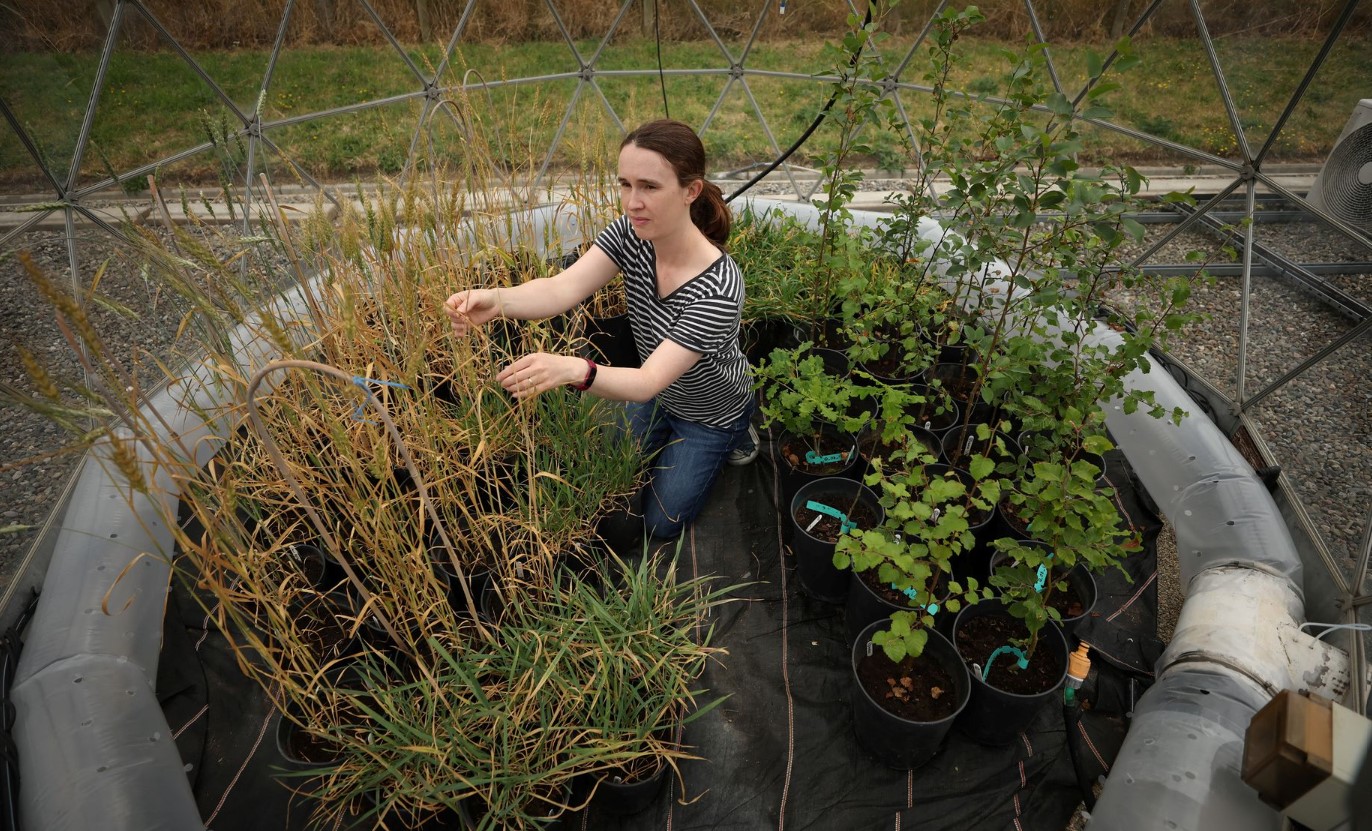Continent will see more vehicle traffic and waste burning as the population is set to double by mid-century By Gloria Dickie Plant scientist Felicity Hayes checks on her crops inside one of eight tiny domed greenhouses set against the Welsh hills. The potted pigeon pea and papaya planted in spring are leafy and green, soon to bear fruit. In a neighbouring greenhouse, those same plants look sickly and stunted. The pigeon pea is an aged yellow with pockmarked leaves; the papaya trees reach only half as tall. The only difference between the two greenhouse atmospheres – ozone pollution. Hayes, who works at the UK Centre for Ecology and Hydrology (UKCEH), is pumping ozone gas at various concentrations into the greenhouses where African staple crops are growing. She is studying how rising ozone pollution might impact crop yields – and food security for subsistence farmers – in the developing world. Ozone, a gas formed when sunlight and heat interact with fossil fuel emissions, can cause substantial losses for farmers, research suggests, by quickly aging crops before they reach full production potential and decreasing photosynthesis, the process by which plants turn sunlight into food. Ozone stress also reduces plants’ defences against pests. A 2018 study in the journal Global Change Biology estimated global wheat losses from ozone pollution totalled $24.2 billion annually from 2010 to 2012. In a January paper published in Nature Food, researchers tallied some $63 billion in wheat, rice and maize losses annually within the last decade in East Asia. Scientists are particularly worried about Africa, which will see more vehicle traffic and waste burning as the population is set to double by mid-century. That means more ozone pollution, a major challenge for smallholder farmers who make up 60 per cent of the population in sub-Saharan Africa. “There is a serious concern that ozone pollution will affect yields in the long run,” said senior scientist Martin Moyo at the International Crops Research Institute for the Semi-Arid Tropics in Zimbabwe. He called out an “urgent need for more rural studies to determine ozone concentrations” across the continent. Earlier this year, scientists with the UK-based non-profit Centre for Agriculture and Bioscience International (CABI) set up ozone monitoring equipment around cocoa and maize fields in Ghana, Zambia and Kenya. But most African countries do not have reliable or consistent air pollution monitors, according to a 2019 UNICEF report. Among those that do, few measure ozone. RISING OZONE In the stratosphere, ozone protects the Earth from the sun’s ultraviolet radiation. Closer to the planet’s surface, it can harm plants and animals, including humans. While air quality regulations have helped reduce ozone levels in the United States and Europe, the trend is set to spike in the opposite direction for fast-growing Africa and parts of Asia. Climate change could also speed things along. In areas of Africa with high fossil fuel emissions and frequent burning of forests or grassland, new research suggests hotter temperatures could make the problem worse as they can accelerate chemical reactions that create ozone. While research has found North American wheat is generally less impacted by ozone than European and Asian counterparts, there have been fewer studies on African versions of the same crops that over decades of cultivation have been made more suitable to those environments. Once every two weeks in a Nairobi market, farmers from the countryside bring samples of their ailing crops to a “plant doctor” in hopes of determining what is affecting their yields. “A lot of (ozone) symptoms can be confused with mites or fungal damage,” said CABI entomologist Lena Durocher-Granger. “Farmers might keep applying fertilizer or chemicals thinking it’s a disease, but it’s ozone pollution.” Her organisation is working with UKCEH to help people identify signs of ozone stress and recommend fixes, such as watering less on high ozone days. Watering can leave leaf pores wide open, causing plants to take in even more ozone. RESILIENT CROPS In her Welsh greenhouses, Hayes was exposing crops in one dome to the lowest amount – 30 parts per billion – similar to the environment of North Wales. In the dome with the highest ozone level, plants were receiving more than triple that amount, mimicking North Africa’s polluted conditions. Hayes and her colleagues have found that certain African staples are more affected than others. In a dome filled with a mid-level amount of ozone, North African wheat plants had quickly turned from green to yellow within just a few months. “You get tiny thin grains that don’t have all the good bits in them, a lot of husk on the outside and not as much protein and nutritional value,” Hayes said. That fits with research her team published last year on sub-Saharan plant cultivars, which found that ozone pollution could be lowering sub-Saharan wheat yields by as much as 13 per cent. Dry beans could fare worse, with estimated yield losses of up to 21 per cent in some areas, according to the same study, published in Environmental Science and Pollution Research. “Beans are a useful protein source in Africa, and subsistence farmers grow a lot of it,” said Katrina Sharps, a UKCEH spatial data analyst. Sub-Saharan millet, however, seemed more ozone tolerant. Yet Africa produced about half as much millet as wheat in 2020. “If the soil and growing conditions are suitable,” Sharps said, “subsistence farmers may consider growing more millet.”







Click here to change your cookie preferences